Recently, Beitst Composite Materials Co., Ltd., headquartered in Fushun City, Liaoning Province, announced that it has developed a high-performance polymer composite material that can realize vehicles, ships, and ships under various mechanical performance requirements. Lightweight aircraft. The company’s chairman said, “The new polymer composites we developed have the ability to adapt to almost all harsh conditions. This material can be used in many types of weapon systems, such as lightweight fighter aircraft and warships. To greater extent the combat unit's payload, combat radius, and mission capabilities."
In 2014, Liaoning University evaluated the performance of composite materials developed by Baust. Liaoning University stated that it can surpass metal materials when it is the highest strength, and at the same time is slightly lower than it is, and has an ultra-low K value.
Liaoning University in Shenyang is one of the two institutions that evaluated the properties of carbon fiber composites produced by Baxter, and the other is Dalian Institute of Chemicals.
Gao Yang, a professor of chemistry at the university, said that “carbon fiber is a material with excellent physical properties that can withstand high temperatures without losing strength and has good corrosion resistance to common acids and alkalis. It is widely used in aviation, aerospace, and defense. In many fields, it was hailed as the "black gold" of the industrial sector. Because of its particularity, this production technology was a technology-intensive and politically sensitive strategic resource during the Cold War period. The Paris Coordination Commission headed by the United States opposed the then socialist camp. Embargo."
Experts said that the new polymer composite materials can be used to develop warplanes, ships, and vehicles. It may be the development of aircraft carriers and new types of carrier-based aircraft.
Beysite Composite Materials Co., Ltd. was established in 1992 and has long been committed to the advanced polymer composite materials for developers and military use. In the late 1990s, the company addressed the issue of lightweighting for some shipbuilding companies. The Baist plant covers an area of ​​150 acres and specializes in the construction of carbon fiber composite products. It used to build assault boats and speedboats for the military, quickly built houses and bridges, built lightweight partitions for battleships, and was responsible for the construction of hangars in Shenyang Aircraft Manufacturing Factory.
The Beist factory now has about 200 employees. With the launch of China’s aircraft carrier construction project and US President Barack Obama’s announcement that the US Department of Energy is taking the lead in launching competition for innovative composite material manufacturing innovation agencies, Bestel, as a leading company in the Chinese advanced composite materials industry, has begun to focus on advanced fiber-reinforced polymer composites. material.
Advanced composites are used in specific industries such as aircraft, military vehicles, satellites, and luxury cars. These materials are expensive, manufacturing requires a large amount of energy, and are difficult to recycle. Baest’s advanced composite manufacturing innovation organization aims to overcome these obstacles and develop low-cost, high-speed and low-energy manufacturing and recycling processes to expand its use. The agency’s goal is to reduce the cost of advanced composites by 50%, reduce manufacturing energy consumption by 75%, and increase the recovery of composites to over 95% within 10 years.
Advanced composites will help manufacturers deliver cleaner, more energy-efficient products at lower cost, such as ultra-lightweight, lightweight vehicles, lighter and longer fan blades, high-pressure fuel tanks for natural gas fuel vehicles, and lighter, more energy-efficient Industrial equipment.
As the carbon fiber composite material is an indispensable strategic new material in the national economy and national defense construction, China’s carbon fiber industry has long-term independent research and development, breaking the blockade of foreign technological equipment and achieving initial results in carbon fiber industrialization. For more than a decade, the special applications of high-quality carbon fiber materials in aerospace, military, and other fields have received the highest attention from our government. The industrialization of carbon fiber has been included in the national “863†and “973†plans. The National Development and Reform Commission, the Ministry of Science and Technology, and the Ministry of Industry and Information Technology have Other departments have also increased their support for carbon fiber industrialization. The national “Twelfth Five-Year Plan†new material industry development plan will also include carbon fiber as a key development project. With the support of national policies, China’s carbon fiber industry has made significant progress in key technologies, equipment, industrial production, and downstream applications. The T300 and T700-kiloton industrialized installations have been completed and put into operation. The initial establishment of the carbon fiber industry from raw silk and carbon fiber The entire industrial chain of composite materials and products achieved a transformation from nothing.
With the constant investment and efforts in recent years, the development of China's carbon fiber industry has entered the blowout period. At present, there are more than ten T300-class carbon fiber materials commercialized production lines that have been completed or will be put into use in China. At present, some companies plan to expand their capacity. . As the production equipment and technology are basically based on the domestic, China's T300 carbon fiber material can basically meet the military and civilian needs, at present, 3K, 6K, 12K and 24K filament military and civilian products are developing rapidly. At present, the total capacity of China's T300 carbon fiber material is approximately 1.9 to 22,000 tons, and the total production capacity has reached the world's number one.
Since 2007, domestic military carbon fiber materials have been widely used in the field of new equipment of our military. For example, the F-11B and J-11BS fighter aircrafts developed and produced by the AVIC Shenfei Company have widely adopted vertical tail components made of domestic military carbon fiber materials. Our Army Straight 10 and Straight 19 helicopter gunships make extensive use of fuselage frame structures, helicopter rotors, wing skins and helicopter tail parts made from domestic military carbon fiber materials. Our new-generation intercontinental ballistic missiles, Dongfeng-41 and Julang 2, all use missile shells made of domestic carbon fiber materials. On the whole, at present, the shortage of military carbon fiber materials in China and the problem of “cracker neck†have been fundamentally alleviated. At present, the main direction of work is to promote product quality stability and improve processing technology.
Since 2011, China's T700 military carbon fiber material production technology has matured. China Treasure Eagle's T700 production line is currently the world's third commercial production line using carbon fiber dry-jet wet spinning technology system, which has important strategic significance. At present, the capacity of T700 carbon fiber materials under construction, construction and planning in China will reach around 20,000 tons. In 2012, China invested 250 million yuan to build the first T800 carbon fiber production line and achieved stable mass production, breaking the blockade and monopoly of key equipment and technical bottlenecks of high-tech carbon fiber development and production in developed countries, and filling domestic Blank for high-performance carbon fiber manufacturing. Up to now, the product performance of China's first T800 carbon fiber production line has reached or even surpassed that of Toray.
At present, China has fully started the construction of the 1,000-ton T800 carbon fiber production line and plans to fully put into operation in 2015. It is estimated that by 2020, China's annual carbon fiber output will reach 5.5 to 70,000 tons, and a 1,000-ton T1000 carbon fiber production line and a 100-ton MJ series carbon fiber production line will be built, and T1200 and M70J and other higher-performance fibers and special composites can be developed. Development and industrialization of materials. By 2020, China's carbon fiber material technology will be comparable to Japan, the United States, and Germany, the three major carbon fiber technology powerhouses.
We Manufacture, Exporter & Supplier- Aluminum Reducer
We can manufacture two kinds of Aluminum Reducer Pipe: 6061 Butt-Weld Concentric Reducer (Conc Red) and Eccentric Reducer .
Which are commonly used to change the pipe size or pressure in a piping system.
Aluminum Pipe Reducer,Aluminium Alloy Reducer are made of Aluminum seamless tube within the range of DN 15 – DN500.
Aluminum Reducer Fittings Specifications
Thickness :
3mm-50mm
Outer diameter:
15mm-500mm
Alloy Grade:
1000 series : 1070A,1060,1100,1200
2000 series :2A11,2017,2A12,2024
3000 series :3003 3A21
5000series :5A02,5052,5A03,5A05,5A06,5083,5086,5454
6000 series :6061,6063,6A02,6082,6005
Surface
Mill Finish, Anodized, Powder Coated, Wooden Finish, Polish
Packing
Export standard
Payment Terms
100% irrevocable L/C at sight or 30% T/T in advance as deposit,70% balance before shipment
MOQ
1 Piece
Delivery time
20-45 days after receiving L/C or deposit
Loading Port
Xingang Port,Tianjin
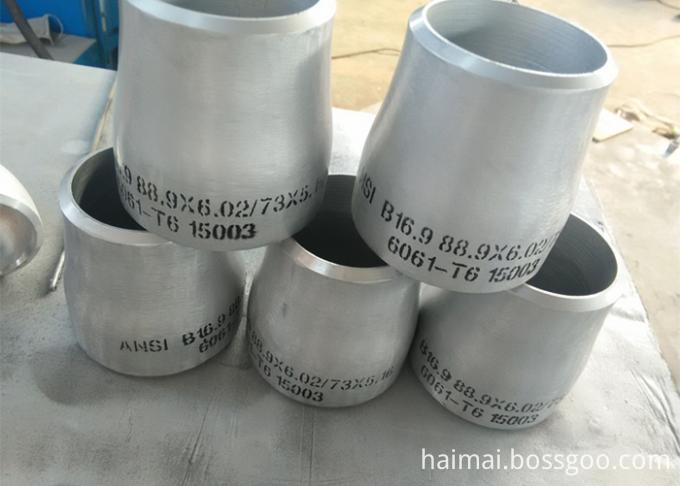
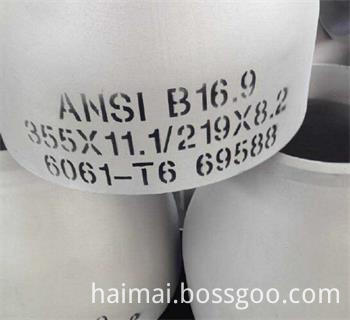
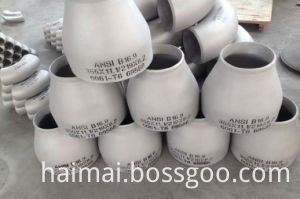
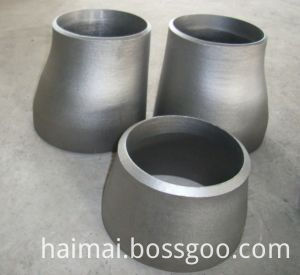
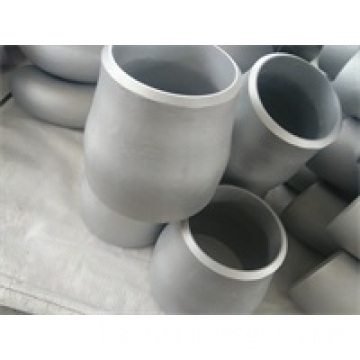
Aluminum Reducer
Aluminum Reducer,Aluminum Reducer Pipe,Aluminum Pipe Reducer,Aluminium Alloy Reducer,Aluminum Eccentric Reducer,Aluminum 1060 Concentric Reducer,Aluminum 6063 Concentric Reducer
HEBEI HANMAC MACHINE CO., LTD. , https://www.chinahanmac.com
![<?echo $_SERVER['SERVER_NAME'];?>](/template/twentyseventeen/skin/images/header.jpg)